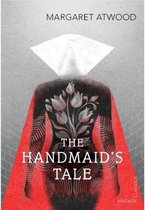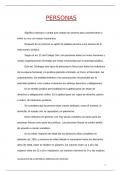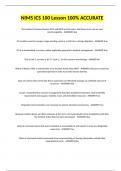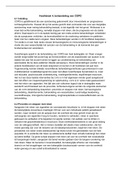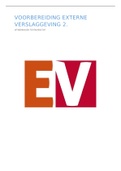Context
Reception – Mary McCarthy said it ‘lacks the ironic bite and linguistic imagination’ of
works like 1984, Brave New World and A Clockwork Orange
Based on biblical patriarchy, Islamic militarism and the Hindu caste system
Tammy Faye Bakker and Phillis Schlafly melded in Serena Joys character
The book attempts to draw to its conclusion the radical feminist movement (women need
men like fish need a bicycle) and the new right movement, finding significant flaws in
both. The New Right was concerned about ‘birth death’, gay rights, abortion and divorce.
HMT was recently banned by a school in Madison County, Virginia for being ‘sexually
explicit’, though Atwood points out HMT is far less sexually explicit than the Bible. It is
among the most frequently banned books in the United States.
‘Every totalitarian government has taken an interest in women’s reproductive rights’
(Atwood)
Responding to 80s radical feminism which tended towards ‘a kind of separatist pit, a
matriarchal nostalgia’ (Lorna Sage)
North American Puritanism – people say it can’t happen here, but it already did. Women
were renamed in a way that ‘providentially reminded them of their feminine destiny’
(Kaler) e/g Silence, Patience, Fear, Prudence. There was also a rejection of mirrors and
combs and any more clothes than was functional, just as in Gilead. Reading was
restricted to the Bible.
Atwood’s study at Harvard coincided with the 1962 Cuban Missile Crisis which likely
brought to the forefront of her mind ‘potential imminent destruction’ (Wisker)
HMT was turned down by many film studios as they believed it was too feminist and
would harm the reputation of the actors. ‘A film for and about women…would be lucky if
it made it to video’ (Teitelbaum)
Hitler and Nazi Germany – stress on family values e/g the three Ks for women: Kinde,
Küche, Kirche meaning children, kitchen and church, Aryan mother who had 5 or more
children received the Mutterkreuz or ‘mothers cross’, book burning, people were
encouraged to betray any perceived lapses in others, genocide justifies by describing
Jews, gypsies, disabled people etc. as ‘Untermenschen’, yellow stars to demarcate Jews
also feature on the bodies of Jews hung on the wall in Gilead, children of ‘undesirables’
were removed from their parents and adopted by loyal Nazis similar to Offred’s daughter.
Mao’s China – intellectuals singled out for ill-treatment and university life coming to an
end as it does in Gilead, all books other than Mao’s ‘Little Red Book’ were burned,
children of the ‘bourgeoisie’ were forcibly removed from their parents to be adopted by
Communists loyal to Mao.
Taliban – roughly a decade after HMT published, refusal to allow girls to be educated,
modest dress for women including the covering of the face by a head to toe veil or burqa,
brutal sentences imposed for breaches of sharia law such as amputations and public
stoning. Atwood visited Afghanistan in 1978 and saw the repression of women which
was already prominent there.
Capital punishment in America is not public but several hundred specially invited
witnesses may be present for a death, including relatives of murder victims. Iran, Sudan,
North Korea, Saudi Arabia and China still carry out public executions.
American slavery in the 1800s – the underground railroad to Canada, punishments for
attempts to escape included severe floggings and often death. At the red centre, Moira
tried to escape and was punished by having her feet beaten with steel cables by Aunt
Lydia.

